This has been one loooong day!
When the incessant beeping of my travel alarm woke me up at 6:30, I was immediately glad I had indulged in a shower the day before. More sleep is ALWAYS better. I enjoyed my snoozes before cramming everything into my pack to be stored behind the reception desk while I was out enjoying the island.
The same man who had plagued me with unrelenting questions about myself the night before was still attending the desk in the lobby. He brightened when I entered the room and my heart sunk at trying to make phony conversation this early in the morning. He insisted that I wait inside for the tour to come and pick me up until I finally lied and said it departed from the agency. I crossed my fingers hoping that he wouldn`t check-up on me via the window near the desk.
The tour bus was one of the least interesting I`ve seen down here; straight-backed, school bus seats in brown with very little leg room. I made my way to the back where the seats sit a few inches higher. On our thirty minute journey to Paracas (the departure bay), we passed several offshore rigs and several fish food factories which made me endlessly thankful to only have endured the smell of burning coal in connection with my work history. I couldn`t even imagine spending a lifetime reeking of fish. The guide told us that the offshore rigs were natural gas wells, or something of the sort, and all of it was being piped to Mexico, the U.S., and Canada. Where do Peruvians get their natural gas, then?
We arrived in Paracas and were immediately consumed by the permeating fish-smell and the chaos of several disorganized tour agencies. Pelicans, tamed by constant contact with humans took the strip of beach by storm to catch the small fish tossed from local hands in hopes of tips from tourists. I`ve seen plenty of pelicans before, but I`ve never been close enough to see the unmatched texture of their expandable pouch beneath their bill. And they are such large birds! Incredible! I was mid-sentence in my book when I heard my name called and was herded back onto a bus and hauled off down the road.
I found myself among several new faces, and the person in charge of our group seemed to be constantly changing. Our numbers multiplied and divided many times as we passed through several buildings and finally arrived at the dock where a jet boat meant for 40 awaited. I dumped myself into a seat and introduced myself to Cliff from Philadelphia (originally Atlanta). For the first time in weeks, I was blessed with the company of someone who appreciates the sharp cynicism that often comes pouring out of my mouth. Sarcasm is definitely my element, and I love when I can make people laugh. We had in common our experiences with crew (he`s a professional in training) and journeys to Mardi Gras. He made the trip worth every penny!
The trip out to the island was an adventure in itself for me. I am such a water baby. And how!? Growing up in the semi-desert of Wyoming, who would have thunk? However, I found myself flashing back to childhood memories of boat rides across Keyhole Resivoir, gleeful with the wind in my hair and my hand plunged into the water alongside the boat where the wake was being born.
When we got close enough to the island to make out it`s inhabitants, I realized I had failed to acknowledge one crucial detail about this whole excursion. Isla Ballestas is known both for it`s abundant wildlife (especially birds) and the corresponding guano industry that results. Guano, if you are unfamiliar with the term, is the more elegant word for bird poo (also used in reference to bats). Turns out it makes a fantastic fertilizer. The part I failed to foresee is the not-so-fantastic smell. UGH! My delight was momentarily quelled.
The geography of the island was, in itself, a sight to behold. Sandstone continuously carved by the sea left caves and grooves awash with a multitude of colors. All different species of birds swarmed the island, as thick as carpet in places. And, to my very pleasant surprise, PENGUINS waddled around on the beaches. I have always wanted to see penguins in the wild, not to mention that Nate and I have an ongoing joke about them, so I was pretty well ecstatic at first sighting. I always thought I`d have to venture towards Antarctica to get a glance at the odd birds, but here they were! Half way around the island, sea lions played on beaches and struggled up out of the sea onto rocks. They used their flippers just like hands and feet! It was so cool! Along with crabs clinging like starfish to the seaside cliffs, we also go to see the home of the three rangers who are the keepers of the island. Yet another job I am endlessly thankful not to be stuck with. I can`t even imagine breathing drying guano all day long.
The return journey brought more childhood memories (Dad, can we go to Keyhole next time I come home?) and my first sight of seagulls getting their own food instead of bumming off the beach leavings. They dive into the water just like Osprey! It was so cool to watch them cannon-ball into the ocean again and again as we cruised across the waves of the sea.
Back on shore there was more chaos as they separated us into groups of those who would continue on the afternoon tour, and those who were headed back to Pisco. I had gracefully bowed out of the afternoon portion, recognizing it as merely a way to burn time and an excuse to charge more money.
When I arrived back in town, I headed straight for the laundromat. The señora there was very clear about pick-up time. If I didn`t get my clothes by 12:30 (it was 11:45) they would be closed for siesta until 5 p.m. As I approached the establishment, I noted an awkward-looking fellow who had planted himself right in front of the entry way. As I tried to skirt around him, I realized that he was guarding the door. Just then, the señora pulled up in a three-wheeled taxi (see photo) and told me in rapid Spanish to come back later. When I responded with a confused look, they just kept begging me to please come back later. The door-guard promised me they wouldn`t be closed, so I reluctantly searched out some lunch.
Determined to try to local fare, I stepped into a restaurant and went through each offering with the waitress. Even if you can translate the name of the dish, it rarely provides any clue as to the ingredients. I decided on some kind of meat with rice and the local potato (they`re different everywhere!), and was chowing down on some of the most delicious food when suddenly a group of thirty men poured into the restaurant. They seemed to own the place as they helped themselves to drinks and baskets of bread. I wish I had the guts to strike up conversation with a table of them, but nagging thoughts of my clothes stuck for five hours inside the locked laundromat doors nudged me towards the exit.
Back at the laundromat, the señora hadn`t returned, but the doors were still open. I sat trying to read my book while simultaneously tuning out the American heavy-metal blaring from speakers in the back room. Ten pages and 30 minutes later, irritation started to fester as I wiggled and tapped my fingers. Suddenly another three-wheeled taxi pulled up, and out jumped a young woman, bag in hand. I unwrapped the yellow plastic to take inventory as she explained that their electricity had gone out leaving them without a dryer. I dug in my pockets for my seven soles as I tried to fend off her profuse apologies and headed back to the hostel lobby to pack my bag.
Finally the conversation monger in reception had been replaced by a very pleasant young woman who was delighted for the momentary boredom-cure I provided. I packed my newly cleaned clothes into my backpack as she shuffled through my photos, and then got her advice on how to get from town to the highway, and then from there to Cuzco. I added her advice to the plethora I`d already collected, and headed for the local transportation hub. Like the woman at the hostel, one of the guys yelling out destinations was drinking some kind of pop/soda. They had both been sucking it out of a straw plunged into a plastic bag, like the kind you`d use to bring a goldfish home from the store. Strange. I mounted the steps of a “God loves you” bus, and waited for it to fill. Since I had never really gotten a straight answer about where to get off the bus, I was super alert as we rattled down the road. The most consistent response I had gotten was “San Clemente,” but I had a hard time believing the intersection at the PanAmerican had a name. When I thought I was in the right place, I just asked if we were at the highway, and jumped off after getting a positive confirmation.
I had been under the impression that I could wait at the intersection and hitch a bus in the afternoon that was headed to Cuzco. However, after my Nazca experience, I realized that many bsses will pick you up, and many won`t. Wanting to save money, but wanting even more to be guaranteed a seat on a bus, I wandered into one of the only bus offices. After much muddy conversation with the young woman behind the counter, I discovered that I would have to go to Ica, two hours away, to get on the bus, even if I purchased my ticket at the intersection. Because people find it annoying, buses that go long distances stop as little as possible. So, I declined her ticket offer hoping to find something cheaper in Ica, and headed to the other side of the highway to hail the next set of wheels headed that way. I waited mere seconds before an Ica-bound bus saved me from the scorching desert heat.
Upon arrival in Ica, I sweated my way from station to station to find the lowest bidder and finally settled on Flores. Ticket in hand and backpack behind the counter, I headed for the center of town to replenish my rations, check out the churches and pretty plazas, and get my daily dose of internet. Cuzco, here I come!
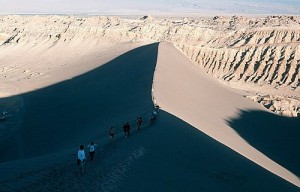
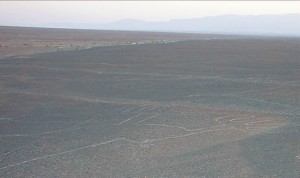
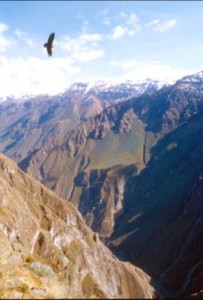
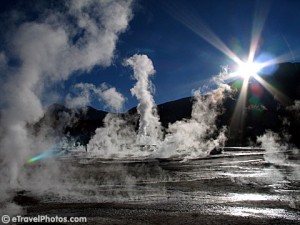
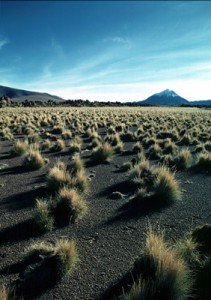
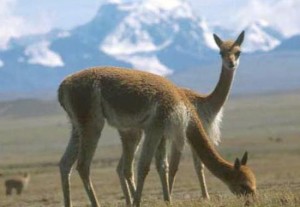
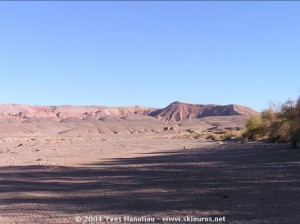
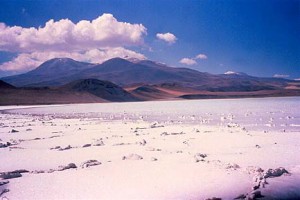
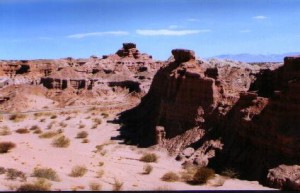
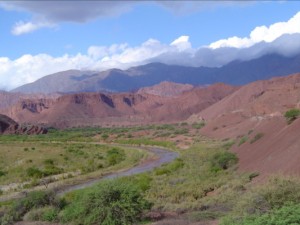




Twitter Facebook Google+ StumbleUpon Reddit Pinterest